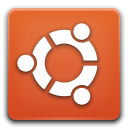Canonical had announced the launch of its Ubuntu OS for the now burgeoning mobile consumer market, while it has already unveiled Ubuntu TV. Mark Shuttleworth has said before that, “The desktop is the killer-app for quad-core phones in 2012. Ubuntu for Android transforms your high-end phone into your productive desktop, whenever you need it.”
What brings the focus back on Ubuntu’s prolific use is a recent video-release of this very capability following the Fórum Internacional Software Livre (FISL) 13 event in Porto Alegre, Brazil recently. The video is clear demonstration of how to bring productivity to smart Android phones. The smartphones doubles up into a desktop and converts to a full-featured phone when there is a call. What more does one need?
The heartening feature on the video is that it clearly establishes that Ubuntu is not emulated but is actually running on the system natively. So, the new age Android smartphone or tablet will have two environments running in parallel on the same hardware with complete synchronization of notifications and such other features.
However, as the video goes on to explain in Portuguese, though Ubuntu can be downloaded, compiled and placed on the machine it will not be able to work, until the phone’s drivers are enabled. However, the phone manufacturers hold proprietary rights and it is typically not possible to have full features.
Therefore, now developers are working closely with mobile manufacturers themselves to have Ubuntu pre-installed. This offers great power to users as they have the option of abandoning Ubuntu, if they do not require it or install and customize it to their requirements.
As demonstrated on the video, a back-version of Android (2.3.5 is used here) is also able to complete convert to a Ubuntu desktop when placed on just a dock connector, which is in turn connected to a TV. The Ubuntu desktop environment with all the applications is now available on the converted TV-desktop.
So, every time there is a call, you simply use the phone and after the call set it back in the dock, and resume with where you left off on your desktop. As the developers say, this is because both the systems are running in parallel and are synchronized optimally. So mail notifications and other such features will continue to be available as much on the hand held device as on the converted-desktop.
The fact established by the video is that even on a slower Android, productivity is unaffected and Ubuntu features are available as normal.
Indeed the video does get the excitement back in for the Ubuntu community, following Canonicals’ declaration of bringing open source favorite software to all devices, earlier this year.
Now, the wait become s exciting as the video also shows that many manufacturers are already working on bringing out pre-installed Ubuntu on their Android smartphones and other hand-held devices.





